What to do if the Abbott CentriMag console malfunctions during ESU use?
- GGregory RiceAug 3, 2025
If the main Console of your Abbott Medical Equipment malfunctions when using ESUs, switch to the backup System.
What to do if the Abbott CentriMag console malfunctions during ESU use?
If the main Console of your Abbott Medical Equipment malfunctions when using ESUs, switch to the backup System.
How to fix Abbott Medical Equipment pump not seated in motor receptacle?
If the Abbott Medical Equipment pump is not seated and locked in the motor receptacle, it might be because the pump retaining screw was not fully unscrewed before inserting the pump. To fix this, unscrew the retaining screw, remove the pump, reinsert the pump, tighten the retaining screw, turn the Console power OFF and ON, ensure no alerts are displayed, and set the Console to begin pumping.
Details the intended use of the CentriMag System and its components.
Specifies conditions where the CentriMag System should not be used.
Defines and explains warnings and cautions used in the manual.
Lists patents and trademarks associated with the product.
Explains formatting and text conventions used in the manual.
Provides a general overview of the CentriMag Circulatory Support System.
Details the main and backup system components.
Lists optional accessories for the System.
Describes the electronically-driven, centrifugal blood pumps.
Explains the function and use of the Mag Monitor with the system.
Details the primary console's capabilities and specifications.
Describes the CentriMag Motor's function in holding and driving the pump.
Explains the function of the backup console.
Describes the custom-designed CentriMag System Cart.
Lists compatible software versions for system components.
Lists items not provided by Abbott Medical but required for system use.
Details the system's classification based on standards.
Provides technical specifications for the Console.
Outlines acceptable conditions for shipping, operation, and storage.
Details the essential performance characteristics of the System.
Discusses electromagnetic interference and its impact.
Addresses potential interference from permanent magnets.
Details the features and functions of system controls and indicators.
Explains how alarms and alerts function and are indicated.
Details the information shown on the Console's digital display.
Lists requirements for connecting external equipment.
Provides steps for unpacking the system components.
Details how to mount the Console onto the System Cart.
Explains how to mount the Monitor using the Monitor Arm.
Describes how to mount the Motor using the Motor Bracket.
Outlines the procedure for powering up the Console.
Explains the self-test sequence performed upon powering on the Console.
Details how to configure system parameters like pump speed and alerts.
Explains how to access and navigate the Console's BIOS settings.
Guides on setting the maximum flow alert threshold.
Guides on setting the minimum flow alert threshold.
Explains how to access the Pressure Menu.
Details setting pressure alerts for the P1 transducer.
Details setting pressure alerts for the P2 transducer.
Explains how to activate the pressure monitoring system.
Explains the function and use of the stopwatches.
Details how to change and use the system's flow ranges.
Explains how to adjust the flow graph speed.
Guides on setting speed increments for the pump.
Explains how to change the system's display language.
Details how to adjust flow limit sensitivity modes.
Explains how to set the application mode (LVAD/RVAD).
Describes the function and use of the system's data logger.
Details how to copy logged data to a USB stick.
Explains how to connect the Monitor to the Console.
Guides on accessing the Monitor's management features.
Refers to instructions for proper pump setup and operation.
Describes how to start and operate the pump.
Details the steps for starting the pump.
Explains how to adjust the pump's speed.
Details how to manually stop the pump.
Explains the procedure for restarting the pump.
Explains the console's strategy for handling alarms and alerts.
Describes how the system responds to alarm conditions.
Details alarms requiring power cycle before restart.
Explains system alerts and their advisory nature.
Guides on appropriate operator response to alarms/alerts.
Details the system's operation on battery power.
Explains system operation using internal battery power.
Provides guidance on planning for battery support duration.
Details switching to a backup console.
Lists estimated battery runtimes.
Covers considerations for transporting the system with a patient.
Details vehicle requirements for transport.
Lists console-specific points for transport.
Explains the procedure for shutting down the system.
Provides instructions for replacing fuses in the console.
Outlines cleaning procedures after patient use.
Details a schedule for preventive maintenance tasks.
Explains the procedure for maintaining the system's battery.
Guides on visually inspecting the motor cable for damage.
Details how to switch to backup system components.
Explains how to switch to an alternative pump.
Provides guidance on operating the system during defibrillation/cardioversion.
Discusses operating the system with electrosurgical units.
Lists console alarms and alerts with system status and operator response.
Presents detailed technical specifications for the console.
Details the technical specifications for the EM-TEC Adult Flow Probe.
Details the technical specifications for the EM-TEC Pediatric Flow Probe.
Provides guidance on electromagnetic emissions.
Provides guidance on electromagnetic immunity.
Details the intended use of the CentriMag System and its components.
Specifies conditions where the CentriMag System should not be used.
Defines and explains warnings and cautions used in the manual.
Lists patents and trademarks associated with the product.
Explains formatting and text conventions used in the manual.
Provides a general overview of the CentriMag Circulatory Support System.
Details the main and backup system components.
Lists optional accessories for the System.
Describes the electronically-driven, centrifugal blood pumps.
Explains the function and use of the Mag Monitor with the system.
Details the primary console's capabilities and specifications.
Describes the CentriMag Motor's function in holding and driving the pump.
Explains the function of the backup console.
Describes the custom-designed CentriMag System Cart.
Lists compatible software versions for system components.
Lists items not provided by Abbott Medical but required for system use.
Details the system's classification based on standards.
Provides technical specifications for the Console.
Outlines acceptable conditions for shipping, operation, and storage.
Details the essential performance characteristics of the System.
Discusses electromagnetic interference and its impact.
Addresses potential interference from permanent magnets.
Details the features and functions of system controls and indicators.
Explains how alarms and alerts function and are indicated.
Details the information shown on the Console's digital display.
Lists requirements for connecting external equipment.
Provides steps for unpacking the system components.
Details how to mount the Console onto the System Cart.
Explains how to mount the Monitor using the Monitor Arm.
Describes how to mount the Motor using the Motor Bracket.
Outlines the procedure for powering up the Console.
Explains the self-test sequence performed upon powering on the Console.
Details how to configure system parameters like pump speed and alerts.
Explains how to access and navigate the Console's BIOS settings.
Guides on setting the maximum flow alert threshold.
Guides on setting the minimum flow alert threshold.
Explains how to access the Pressure Menu.
Details setting pressure alerts for the P1 transducer.
Details setting pressure alerts for the P2 transducer.
Explains how to activate the pressure monitoring system.
Explains the function and use of the stopwatches.
Details how to change and use the system's flow ranges.
Explains how to adjust the flow graph speed.
Guides on setting speed increments for the pump.
Explains how to change the system's display language.
Details how to adjust flow limit sensitivity modes.
Explains how to set the application mode (LVAD/RVAD).
Describes the function and use of the system's data logger.
Details how to copy logged data to a USB stick.
Explains how to connect the Monitor to the Console.
Guides on accessing the Monitor's management features.
Refers to instructions for proper pump setup and operation.
Describes how to start and operate the pump.
Details the steps for starting the pump.
Explains how to adjust the pump's speed.
Details how to manually stop the pump.
Explains the procedure for restarting the pump.
Explains the console's strategy for handling alarms and alerts.
Describes how the system responds to alarm conditions.
Details alarms requiring power cycle before restart.
Explains system alerts and their advisory nature.
Guides on appropriate operator response to alarms/alerts.
Details the system's operation on battery power.
Explains system operation using internal battery power.
Provides guidance on planning for battery support duration.
Details switching to a backup console.
Lists estimated battery runtimes.
Covers considerations for transporting the system with a patient.
Details vehicle requirements for transport.
Lists console-specific points for transport.
Explains the procedure for shutting down the system.
Provides instructions for replacing fuses in the console.
Outlines cleaning procedures after patient use.
Details a schedule for preventive maintenance tasks.
Explains the procedure for maintaining the system's battery.
Guides on visually inspecting the motor cable for damage.
Details how to switch to backup system components.
Explains how to switch to an alternative pump.
Provides guidance on operating the system during defibrillation/cardioversion.
Discusses operating the system with electrosurgical units.
Lists console alarms and alerts with system status and operator response.
Presents detailed technical specifications for the console.
Details the technical specifications for the EM-TEC Adult Flow Probe.
Details the technical specifications for the EM-TEC Pediatric Flow Probe.
Provides guidance on electromagnetic emissions.
Provides guidance on electromagnetic immunity.
| Brand | Abbott |
|---|---|
| Model | CentriMag |
| Category | Medical Equipment |
| Language | English |
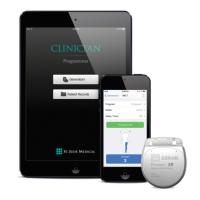
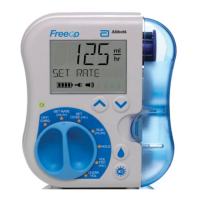
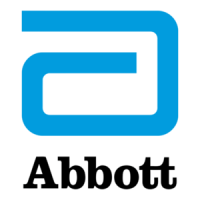

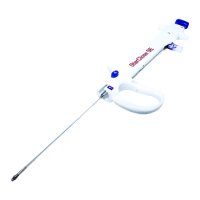

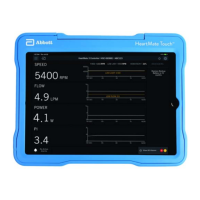
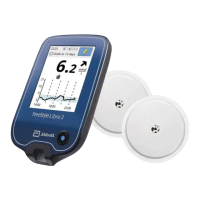
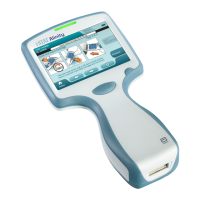


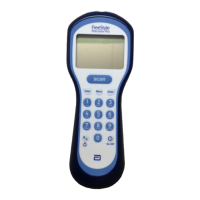
